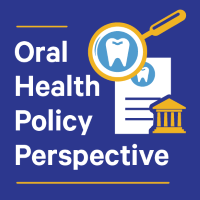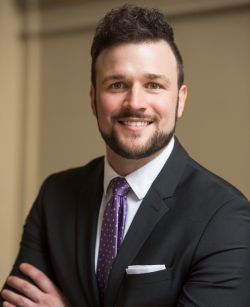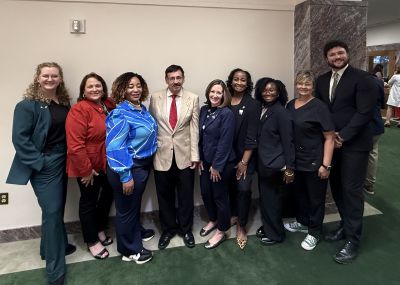Enter your email to receive the CareQuest newsletter:
June 26, 2025

By Matthew Steele, Director of State and Local Advocacy, CareQuest Institute
Despite community water fluoridation (CWF) being a safe and effective public health measure that has helped reduce tooth decay for decades, more than 20 states introduced legislation this year aimed at restricting — or outright banning — CWF.
Even one state, to us, is too much.
The issue of CWF has become increasingly politicized in those 20 states — and in many others. For grassroots organizers, health care providers, patients, and community stakeholders, these debates carry real-world consequences: Removing fluoride from water can lead to increased oral health disparities, higher treatment costs, and reduced access to preventive care. And fluoridation remains one of the most cost-effective ways to promote oral health equity, particularly for underserved populations.

At a time when state-level decisions increasingly determine local health outcomes, recent wins in Louisiana and Connecticut offer timely and informative case studies. These victories demonstrate that a united stakeholder front, evidence-based data, and local engagement can protect access to fluoride, regardless of the political environment.
Louisiana: Defeating a Fluoride Ban with a United Front
In Louisiana, Senate Bill 2 threatened to ban fluoride from public water systems across the state. This move would have deepened existing oral health disparities, especially in rural and underserved communities. Prior to legislative hearings on the bill, advocates were already sensing momentum building behind banning CWF statewide. Misinformation and distrust fed into anti-fluoride arguments that were spreading among legislators, bolstered by misinformation and distrust in public health institutions largely stemming from COVID-19 public health measures. To counter this, CareQuest Institute, along with the Louisiana Dental Association (LDA) and local members of OPEN, organized a coalition of local stakeholders and created a rapid-response strategy to defeat the bill.

At the outset, the coalition swiftly countered misinformation with credible, evidence-based data. Coalition members responded in real time to anti-fluoride claims and equipped advocates with science-backed messages to dispel any myths. This proactive approach helped correct misconceptions and kept the conversation focused on the public health benefits of fluoride.
To support this work, the LDA led a coordinated effort to mobilize dentists statewide, urging them to contact their legislators directly and attend committee hearings to testify in opposition to the bill. Those dentists testified in the Senate and House committee hearings, reinforcing the science and public health rationale behind CWF from a trusted provider perspective. OPEN members Celeste Terry, RDH, and Douglas Cross, DDS, also testified and spoke from their personal experience of treating underserved patients.
Ultimately, Senate Bill 2 was defeated in the House Committee on Health in a 10-5 vote. This outcome affirmed the importance of coalition mobilization, data-backed messaging, and grassroots advocacy.
Key lessons from Louisiana’s effort:
- Coalition strength matters: The coordinated effort between LDA, OPEN, the Louisiana Academy of Physician Assistants, and other partners ensured lawmakers heard a unified message.
- Grassroots engagement works: Constituents’ personalized calls and emails helped shift votes.
- Health care voices are persuasive: Dentists and dental hygienists explaining real-world impact brought credibility and urgency to the conversation.
- Rapid rebuttals to misinformation were essential. Advocates were prepared to counter false claims with facts in real time during lawmaker meetings and testimony.
Connecticut: A Model for Proactive Fluoride Protection
While many states saw efforts to weaken or ban fluoride in community water systems during this legislative cycle, Connecticut emerged as a beacon of proactive public health leadership.
In June, state lawmakers passed Senate Bill 7, a landmark health protection package that protects water fluoridation. The bill mandates that water systems serving 20,000+ people — and this gets a bit detailed — maintain fluoride at 0.7 mg/L ± 0.15 mg/L, codifying the standard endorsed by Centers for Disease Control even if federal guidance shifts. This safety buffer ensures consistent dental protection for nearly 90% of residents across 32 systems.
Connecticut Oral Health Initiative (COHI), a long-standing CareQuest Institute grantee, championed the bill. The organization built upon its track record, developing the state’s oral health improvement plan that includes fluoride education and varnish programs in pediatric primary care. According to the Connecticut Department of Public Health, CWF reduces cavities by 25% in children and adults and is less costly over a lifetime than treating even a single cavity.

COHI Executive Director and State Representative Gary Turco and COHI Policy & Advocacy Director Sandra Ferreira-Molina headed the legislative victory. They built a powerful, data-driven coalition, leveraging COHI’s longstanding collaborations with health departments and dental providers to inform stakeholders and dispel misinformation during legislative hearings.
A Blueprint for Other States
Connecticut is the only state this 2025 legislative cycle to enact proactive water fluoridation protection, underscoring its innovative stance. The effort offers several lessons:
- Future-proofing: Codifying fluoride levels shields communities when federal recommendations become politicized.
- Health equity through consistency: With fluoride reaching Medicaid-eligible and vulnerable populations, codified standards reduce disparities.
- Educator‐advocate collaboration: COHI’s dual role in data collection and advocacy ensured both evidence and community voices were heard.
- Holistic integration: Working across sectors, including primary care providers who apply fluoride varnish, reinforced the message that oral health is inextricable from general health.
Connecticut’s experience demonstrates that proactive, collaborative, and evidence-grounded policy can not only defend but advance public health. COHI’s strategy represents a replicable blueprint: Legislate stable protections, leverage data-driven advocacy, and embed oral health within broader health systems.
Whether defeating a fluoride ban in Louisiana or advancing protections in Connecticut, these victories demonstrate that success is achievable even in vastly different political climates. In both states, strong coalitions, grassroots activation, and trusted health provider voices secured wins and fought back against misinformation. As threats to fluoride continue to emerge across the country, these case studies provide a blueprint for how to defend and strengthen community water fluoridation.
Editor’s Note: To stay in the loop on the latest fluoride policy developments and connect with other advocates, consider joining OPEN and participating in the new CWF Learning Collaborative.